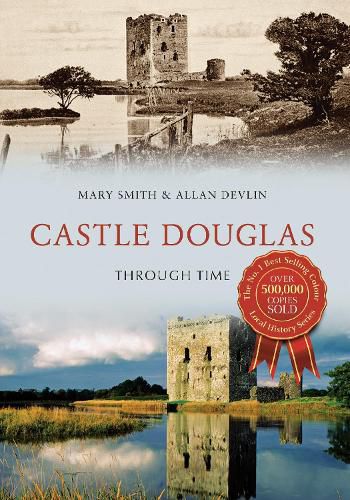Readings Newsletter
Become a Readings Member to make your shopping experience even easier.
Sign in or sign up for free!
You’re not far away from qualifying for FREE standard shipping within Australia
You’ve qualified for FREE standard shipping within Australia
The cart is loading…






The market town of Castle Douglas, beside Carlingwark Loch in the southern Scottish region of Dumfries and Galloway, is relatively new, though the area has been inhabited from prehistoric times and the Romans had a military base close by. In the fourteenth century, Archibald the Grim, the 3rd Earl of Douglas, built Threave Castle nearby.
The town came into being thanks to fertiliser found in the loch and wealthy merchant William Douglas, who laid out the present town in 1792. Though his dream of creating a cotton industry failed, Castle Douglas became a flourishing market town. The opening of the rail line to Dumfries in 1859 improved the town’s connections.
Though the railway closed in 1965, the A75 trunk road ensured the town’s survival as a major stopping point for travellers. Today, it is a major tourist destination, with many visitors using it as a base for exploring this beautiful part of Scotland. All these changes are recorded in this unique and fascinating series of new and old photographs, making this book essential reading for anyone interested in the history of Castle Douglas.
$9.00 standard shipping within Australia
FREE standard shipping within Australia for orders over $100.00
Express & International shipping calculated at checkout
The market town of Castle Douglas, beside Carlingwark Loch in the southern Scottish region of Dumfries and Galloway, is relatively new, though the area has been inhabited from prehistoric times and the Romans had a military base close by. In the fourteenth century, Archibald the Grim, the 3rd Earl of Douglas, built Threave Castle nearby.
The town came into being thanks to fertiliser found in the loch and wealthy merchant William Douglas, who laid out the present town in 1792. Though his dream of creating a cotton industry failed, Castle Douglas became a flourishing market town. The opening of the rail line to Dumfries in 1859 improved the town’s connections.
Though the railway closed in 1965, the A75 trunk road ensured the town’s survival as a major stopping point for travellers. Today, it is a major tourist destination, with many visitors using it as a base for exploring this beautiful part of Scotland. All these changes are recorded in this unique and fascinating series of new and old photographs, making this book essential reading for anyone interested in the history of Castle Douglas.